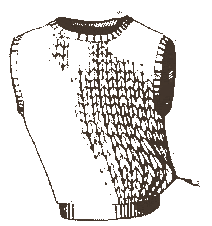John F. Barnes Description of Myofascial Release

The fascia is a specialized system of the body that has an appearance similar to a spider’s web or a sweater.
Myofascial Release is a very effective hands-on technique that provides sustained pressure into myofascial restrictions to eliminate pain and restore motion. The theory of Myofascial Release requires an understanding of the fascial system (or connective tissue). The fascia is a specialized system of the body that has an appearance similar to a spider’s web or a sweater.
Fascia is very densely woven, covering and interpenetrating every muscle, bone, nerve, artery and vein as well as all of our internal organs including the heart, lungs, brain and spinal cord. The most interesting aspect of the fascial system is that it is not just a system of separate coverings. It is actually one structure that exists from head to foot without interruption. In this way you can begin to see that each part of the entire body is connected to every other part by the fascia, like the yarn in a sweater.
Fascia also plays an important role in the support of our bodies, since it surrounds and attaches to all structures. These structures would not be able to provide the stability without the constant pull of the fascial system. In fact, our bones can be thought of as tent poles, which cannot support the structure without the constant support of the guide wires (or fascia) to keep an adequate amount of tension to allow the tent (or body) to remain upright with proper equilibrium.
In the normal healthy state, the fascia is relaxed and wavy in configuration. It has the ability to stretch and move without restriction. When we experience physical trauma, scarring, or inflammation, however, the fascia loses its pliability. It becomes tight, restricted and a source of tension to the rest of the body. Trauma, such as a fall, whiplash, surgery or just habitual poor posture over time and repetitive stress injuries has a cumulative effect. The changes they cause in the fascial system influence comfort and the functioning of our body. The fascia can exert excessive pressure producing pain or restriction of motion. They affect our flexibility and stability, and are a determining factor in our ability to withstand stress and strain.
The use of Myofascial Release allows us to look at each patient as a unique individual. Our one-on-one therapy sessions are hands-on treatments during which our therapists use a multitude of Myofascial Release techniques and movement therapy. We promote independence through education in proper body mechanics and movement, through the enhancement of strength, flexibility, and postural and movement awareness.
Click the link below for a video to help you best understand the John F Barnes Myofascial Release technique and how it can help you:
https://www.youtube.com/watch?v=Zy2GwR-x_YA
Excerpt from John F. Barnes, internationally recognized physical therapist, lecturer, author and authority on Myofascial Release at www.myofascialrelease.com.